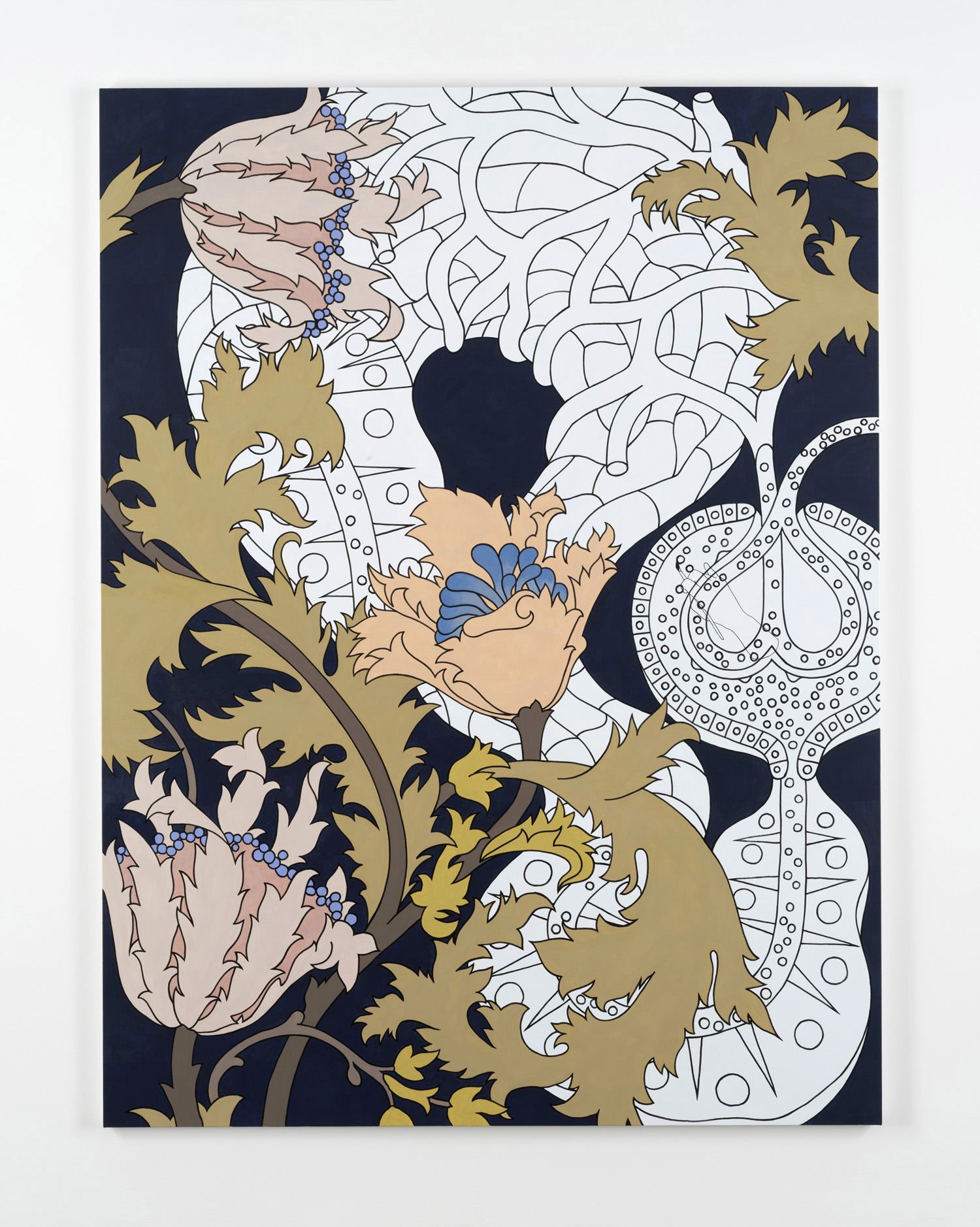
Artist Caitlin Keogh made headlines this fall for her solo debut at Bortolami. Keogh's graphic canvases made using a traditional sign painting technique that aligns her with artists like James Rosenquist, Patrick Caulfield and Tom Wesselmann. Darkly romantic, the images she composes often straddle multiple desires. Keogh’s technical ambition distinguishes her from her peers. Some of her gutsiest examples were on view at the Whitney Museum’s “Flatlands” exhibition.

How do you know a work you've made is good?
What qualifies a work as good for me is that I find I’m thinking about it a long time after I finish it. It’s the feeling that I’ve made a particularly helpful puzzle piece.
What teacher did you learn the most from in school?
I had a lot of really incredible teachers. Bobby Bordo and Amy Sillman were teachers for me in undergrad who gave me the feeling of being really connected to painting, at least as a subject, if not yet as a practice. Painting became a medium and a history that I could see as self-reflexive and also really analytical and critical, from studying with them. I had an amazing art history teacher, Michael Dorsch, who is probably the reason I have so much fascination for older work.
What was your first gallery experience?
My parents had an art gallery/book store in Alaska when I was a little kid. It mostly showed local artists, like landscape painters and traditional crafts people, but I remember my mom put on a show of Judy Chicago prints, a series called The Birth Project. I spent a lot of time there. My dad’s art studio was in the basement.

If you could trade with anyone, who would it be?
Magritte or Ingres. I can’t decide.
Do you live with your own work? Would you?
I live with furniture that I made with my partner, Graham Anderson, for a show we did at 179 Canal in 2010. It’s beautiful stuff; a large, decoratively painted day bed, a plaster pedestal, silk curtains that are also a large drawing, a mirror painted with enamel. Other than that, there’s a small valentine I made for Graham hanging in our living room. I don’t really care to live with my paintings.
What is the best piece of advice you’ve received?
“Stop apologizing.” -Amy Sillman
Ode to Hans Ulrich Obrist, do you have any unrealized projects?
So many.
How did you fund your first works?
Jobs. I worked as a studio assistant for lots of different artists. Also waitressing, babysitting, illustrating, making jewelry, mending and altering clothing. Tons of small jobs to pay rent, and I just always tried to keep studio expenses as low as possible. Painting and drawing can be really inexpensive, it’s was more just a matter of protecting the time required to make them.

What are you working towards?
More paintings.
When you aren't in the studio, where are you?
Home, reading. Or seeing shows at museums. Or having dinner with friends.
In your practice, what comes naturally to you and what do you have to force?
Writing used to feel quite awkward but now I enjoy it. You know when you’re in school, studying for a standardized test and they tell you to always answer the easiest questions first and then go back to the harder ones? That’s my approach in my studio. That way I always feel like I’m doing the easiest of all the things to do, and the things that are uncomfortable get made into very small steps.










 in your life?
in your life?

